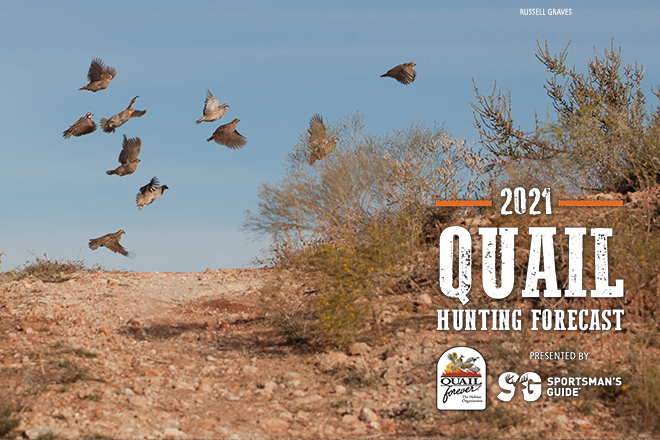
By Oliver Hartner
Better weather and habitat management on public lands should yield positive results for bobwhite hunters of The Bluegrass State. Temperatures stayed milder across all seasons with just a couple of exceptions, and though precipitation levels were higher this year, it does not seem to have had a widespread negative impact. More broadly, habitat still presents a challenge for bobwhite quail in Kentucky, but on areas with successive habitat management, populations seem stable or better when compared to last year.
WEATHER AND CONDITIONS
According to Cody Rhoden, Acting Small Game Coordinator for the Kentucky Department of Fish and Wildlife Resources, the winter of 2020-2021 was a lot drier than the previous winter. “The temperatures were a little cooler, but not many extreme low degree days. The quail in the state should have come out of winter better than last year, though we had record rainfall in portions of the state,” he says.
Rhoden reports that spring and summer seasons were tolerable for quail in Kentucky this year, saying, “It was drier than the previous spring, and summer was a little more wet during the last few months of the season. But temperatures have been pretty much normal excepting a cold snap observed in early spring which did not last very long. In summation, nesting and brood-rearing weather in Kentucky was fair to good this year.”
HABITAT, BROODS AND COUNTS
Consecutive tracts of land with optimal habitat remain in short supply across the state, but well-managed areas should see stable populations. Rhoden says, “The upland habitat has not changed much in the last few years. The Commonwealth of Kentucky has large tracts of connected open lands, but unfortunately the vast majority of it is not fit for bobwhite. However, we worked more in our quail-centric public areas this year, and with the improved habitat, we kept decent quail numbers in those areas, which bodes well for our state overall within the mid-south region.”
The 2021 hatch and broods this year appear to have started a little earlier than last year, and they continue to be at least on par with 2020–possibly even a little above last year—according to Rhoden. “Kentucky has two main ways of indexing the quail population: Hunter Cooperator Logs and the Rural Mail Carrier Survey. Kentucky’s quail population cycles naturally in seven-year cycles, with a peak at year one then a low at year seven. 2018 was the worst year on record for the Rural Mail Carrier Survey, but we have seen increases in the statewide indices from last year to this summer leading up to this season. In the Hunter Cooperator Logs Survey last season, quail hunters in Kentucky averaged one covey per three hours of hunting, and we should expect less time to coveys in the upcoming 2021-2022 season based on observed trends.”
TOP SPOTS
“Hunters should first focus in the western portion of the state, but we do have a few diamonds in the eastern portion of the state,” Rhoden advises. He favors Peabody Wildlife Management Area (WMA) in west-central Kentucky, Clay WMA in northeast Kentucky, and Rockcastle River WMA in southeast Kentucky.
INSIDER TIP
Rhoden says, “Quail hunters in Kentucky should be prepared to do some walking for a thunderous covey rise! My best tip would be to hit these areas as early as you can in the season, and combine this early season hunting with moving slow. Many times coveys will run before getting up, and sometimes only a single from the group will flush while the rest stick to the ground and run off. Taking your time in these scenarios can lead to flushing more birds, especially early in the season.”